Trek’s Emonda ALR is the affordable aluminium version of its lightweight climber’s bike, a dainty alternative to the aero dreadnought that is the Madone.
Trek kindly lent me a frameset and I built it up with SRAM RED eTap and some choice finishing kit from Ritchey. Read on for full details of the build, my thoughts on how it turned out, and video of the bike in action.
- I want to build the world’s nicest Trek Emonda ALR
- Trek’s new Emonda ALR Disc is lighter than its SL carbon counterpart
Trek Emonda ALR long-term review update #2 — final conclusions
I chose the Emonda because I wanted to prove that alloy bikes can be beautiful, desirable things. I think I’ve succeeded.
The ALR passes the look-back test: when I’m walking away from it, I glance back over my shoulder, because it’s downright handsome and its svelte lines give me that fizzy feeling I look for in a bike.
It’s a bike that turns heads and one that people seem to assume is carbon thanks to its luxurious finish.
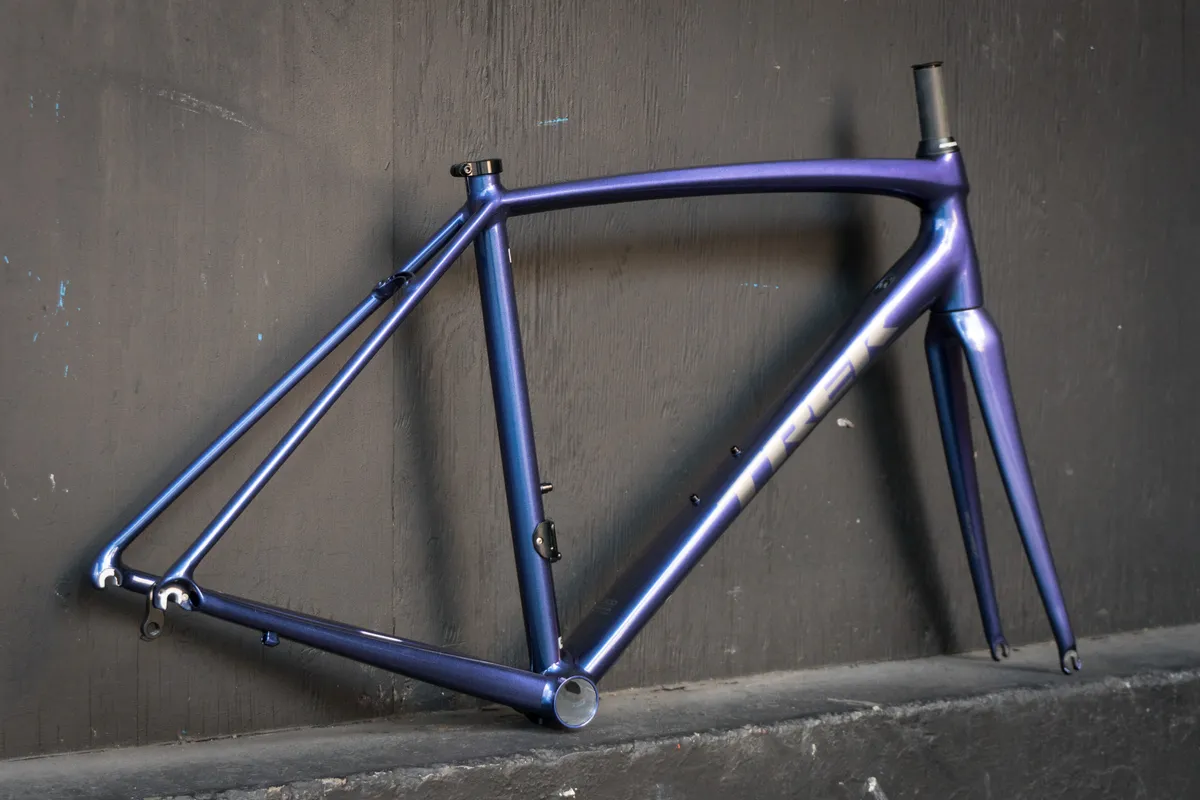
I’ve enjoyed using SRAM eTap too. While it’s now the ‘old’ version, it remains a very elegant design. I love the minimalism of a bike without gear cables and I really like the simplicity of the shifting arrangement — SRAM deserves kudos for taking a clean-sheet approach to the design rather than simply grafting electronic switches onto DoubleTap shifters.
I appreciate how easy it is to change gear from different hand positions too. In the drops, it’s possible to shift using your knuckles, which is handy on fast descents when you want to maintain a safe grip.
From the hoods, I sometimes click the shifters using my ring or little fingers when I’m climbing out of the saddle.
Incidentally, I’ve now had the opportunity to ride the latest RED eTap AXS groupset too (on a 1×-equipped bike, so I could only assess rear shifting) and, while there is a noticeable improvement to the overall smoothness of the shifting, it’s not night and day. The original eTap remains a bloody good groupset, one I’d happily have on my own bike.
Overall I’ve been very happy with my final build, but I’ve been mulling what I could have done differently.
I think if I were starting from scratch I’d choose a skinny round bar for a bit more front-end flex, and also because that way I could have fitted SRAM’s Blip remote switches, giving me an extra set of shift buttons on the tops.
Inertia meant I didn’t end up switching wheels, but a wider set of rims for more tyre volume would have made sense, and might have been a better match for the 28mm Veloflex rubber.
I didn’t have any particular issue with these tyres — and they look lovely — but I prefer lower pressures (60 to 70psi) and the supple ‘open tubular’ construction seems to favour old-school, tub-like high pressures.
At lower pressures the Veloflexes' soft sidewalls were a bit floppier than I’d like, something that’s noticeable with quick changes of direction.
I can’t really fault the Emonda for the money. It isn’t as good as a £3,000 superbike frameset but it punches way above its weight, and looks stunning to boot.
If I were changing one thing about it, I’d prefer a threaded bottom bracket for long-term ease of maintenance, but I didn’t have any problems with the BB86 press-fit. (As it happens, Trek has been making moves back towards threaded bottom brackets, although it remains to be seen if bikes such as the ALR will make the switch.)
I’m going to miss the Emonda ALR — it’s been an absolute pleasure riding a bike that so perfectly embodies the best qualities of aluminium as a frame material.
Trek Emonda ALR — the highs
The Emonda is born for climbing and that’s really where it shines. Heading uphill there’s little to distinguish it from a much more expensive (or carbon) bike. It’s lovely and stiff and, in this build, super light too.
I know I keep banging on about the looks, but that really is a major selling point for the ALR as far as I’m concerned.
The purple-flip frame is gorgeous and a sympathetic build lets it shine. I love the aesthetics of minimalist climbers’ bikes so that’s what I was aiming for when I chose a wireless groupset and low-profile wheels.
How your bike makes you feel is hugely important, and the Emonda feels special to me because I chose everything on it and built it exactly how I wanted.
Trek Emonda ALR — the lows
SRAM releasing a brand new version of my groupset in the spring cut me deep but, once I’d pulled myself together, I remembered that first-gen eTap is still great.
From a riding perspective, my lowest point was likely the 100km ride I did in March. It came after I’d been off the bike for months for family reasons and, as a result, I was woefully unprepared for the 1,700m of climbing.
Not even the Emonda’s ultra-low gearing could save me, and I fell apart like cardboard in the rain.
The bike itself hasn’t suffered any real problems. A minor shifting issue was easily resolved, while a spot of creaking under load was cured by a judicious application of grease at the rear dropouts.
Previous updates continue below.
Trek Emonda ALR long-term review update #1
It’s been a quiet month for the Emonda between time away and unpleasantly damp weather, but I’ve taken steps to address my one real concern with the bike: the brakes.
The rather generic looking S-900s, SRAM’s sole direct-mount offering, have proved to be a disappointment. That they’re a non-series option perhaps reflects the fact that even SRAM doesn’t consider them groupset-worthy — I certainly don’t think they’re RED-equivalent and I’ve been wanting to replace them since my first ride on the ALR.
My disregard for brand purism should be pretty clear by this point, so I’ve doubled down with it and fitted a set of Dura-Ace R9100 brakes in place of the S-900s. Yes, I’m trolling you. Shall I get some Campagnolo wheels to complete the effect?

The Dura-Ace brakes (product codes BR-R9110-RS and BR-R9110-F if you’re geeky about that sort of thing) are near enough exactly the same weight as the S-900s at 300g, but it’s not mass I care about here.
I haven’t had the chance to test them out properly on the road yet, but even on the workstand it’s obvious that they’re much stiffer, with a more defined bite when you pull the levers gently and less visible flex when you squeeze them hard.
From a pure vanity standpoint, they’re also much nicer looking than the SRAMs, even if they do clash horribly from a brand perspective.
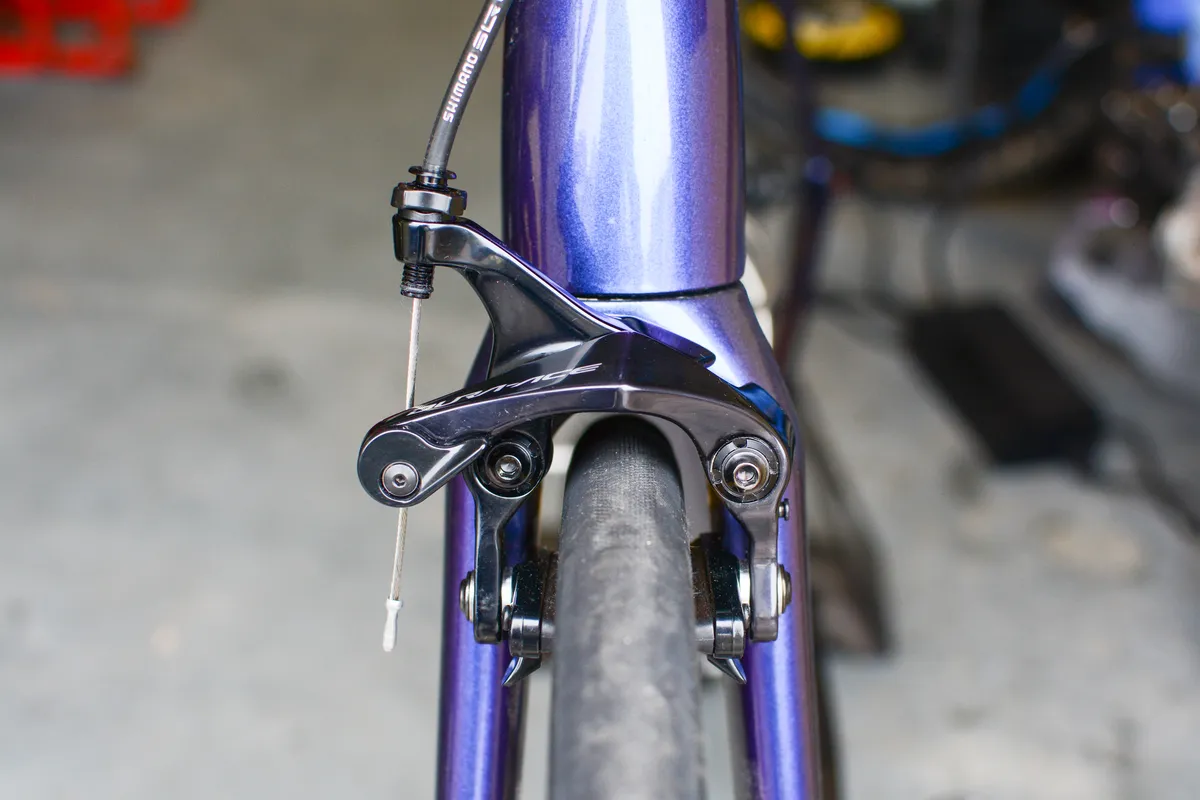
Brakes aside, I’ve not changed much on the Emonda, and while I’m still vaguely mulling wheel options, I don’t feel compelled to make any more big upgrades for the time being.
My most memorable ride on the bike so far was a hilly 56km in the wonderful and aptly-named Peak District. Not far, I hear you cry! But somehow that distance took in almost 1,100m of climbing, vindicating my decision to choose very low gearing.
I’m looking forward to putting more miles on the lovely purple ALR, watch this space.
Trek Emonda ALR build and spec — original post

I’ve already taken a detailed first look at the Emonda ALR’s frameset which you can read here. Suffice to say, it’s made of metal and it’s a very lovely looking thing. At 1,203g including its hanger, cable guides, bottle-cage bolts and seat collar, it’s also reasonably light.
I chose to build the ALR with SRAM RED eTap because I’ve long wanted to get to know the groupset properly. I love the clean-sheet approach SRAM took when it went wireless and I was hugely impressed when I first tried eTap, but I wanted to spend more time actually using it day-to-day.
I opted for super-low gearing by road standards because experience tells me that I wouldn’t regret it — I’m no gear masher.
Of course, since building this bike, SRAM has launched its updated RED and Force eTap AXS 12-speed groupsets. When the news broke I immediately started feeding the Trek into the nearest woodchipper but then I remembered that the bike industry launching new products doesn’t actually render my current kit unrideable.
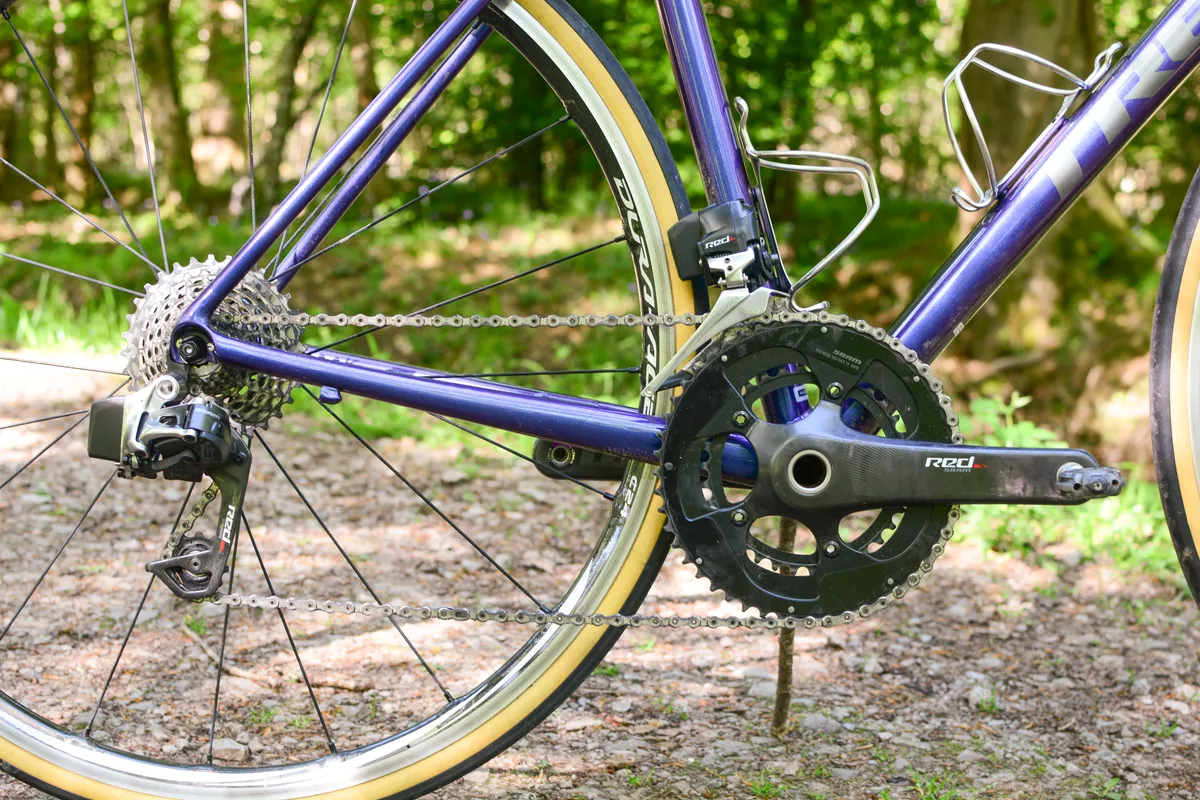
Incidentally, SRAM doesn’t make a RED direct-mount rim brake, instead it offers the non-series S-900, so that’s what I went with. More on those later…
Finishing kit: Ritchey riches and a hot mess of other things
I chose Ritchey finishing kit because it’s consistently impressed me with its feel and finish.

The WCS Carbon Streem bar is particularly nice (and expensive), with slightly swept wing-profile tops that are very comfortable.
The one issue it presented is that I couldn’t figure out a neat way to mount eTap Blip shifters on the tops as I’d originally intended, so I ended up not using them.
The FlexLogic seatpost is similarly attractive and has a flippable head which gives you a wider-than-normal range of setback adjustment.
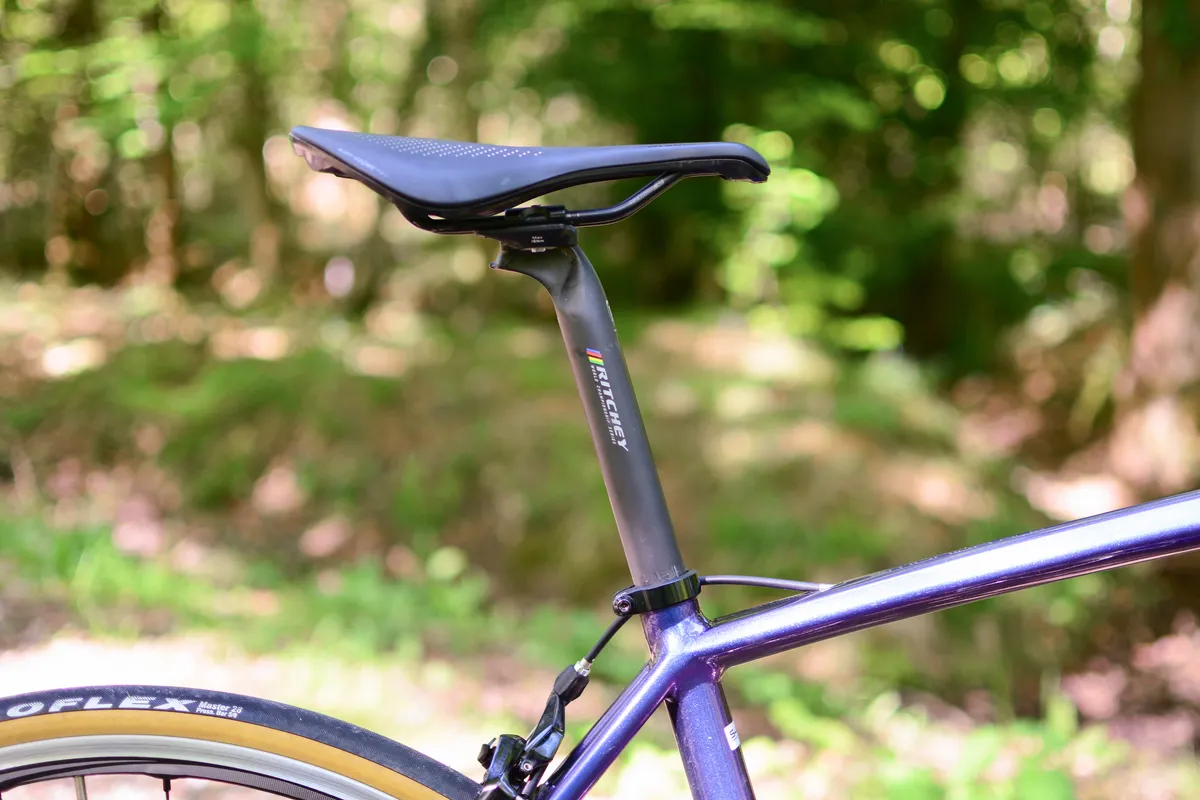
The rest of the build is a bit of a parts bin special, using components I had lying around.
The low-profile Shimano Dura-Ace C24 clinchers are an old favourite, albeit ones that are looking a bit dated with a narrow rim profile. I’ve also mislaid the matching skewers, so the bike is currently wearing a set of FFWD QRs.
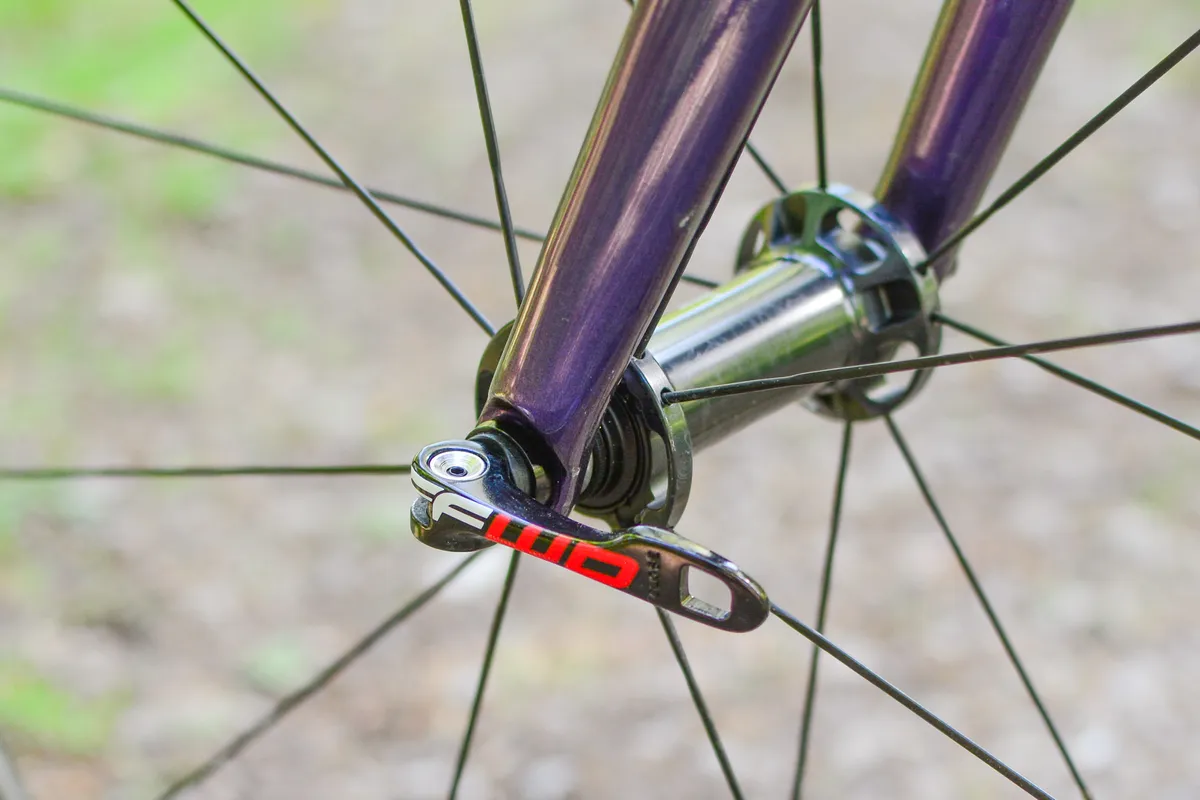
The saddle is a Specialized Power which, after many, many miles, I still can’t decide if I prefer over my old love, the Romin. Oh, and I had to have tan-wall tyres, because of course I did.
So yes, it’s a SRAM-equipped bike with Shimano wheels and mismatched accessories. Purists, avert your gaze.
Trek Emonda ALR full specification
- Sizes (*tested): 50, 52, 54*, 56, 58 60, 62, 64
- Weight: 7.0kg (including pedals, two bottle cages, Garmin out-front mount)
- Frame: Emonda ALR Ultralight 300 Series Alpha aluminium, Invisible Weld Technology
- Fork: Emonda full carbon
- Shifters: SRAM RED eTap
- Derailleurs: SRAM RED eTAP
- Cranks: SRAM RED 50/34t
- Wheelset: Shimano Dura-Ace 9000 C24 clincher
- Tyres: Veloflex Master 28mm
- Brakes: SRAM S-900 direct-mount
- Bar: Ritchey WCS Carbon Streem 40cm
- Bar tape: WCS Race
- Stem: Ritchey WCS C220 100mm (later changed for 120mm)
- Seatpost: WCS Link Carbon FlexLogic seatpost 27.2×350mm
- Saddle: Specialized Power
- Pedals: Speedplay Zero Stainless
- Accessories: Arundel Stainless bottle cages
Trek Emonda ALR geometry
- Head angle: 73.0 degrees
- Seat angle: 73.7 degrees
- Chainstay length: 410mm
- Seat tube: 540mm
- Top tube: 543mm
- Head tube: 155mm
- Bottom bracket drop: 70mm
- Wheelbase: 981mm
- Stack: 555mm
- Reach: 381mm
Why did I choose this bike?
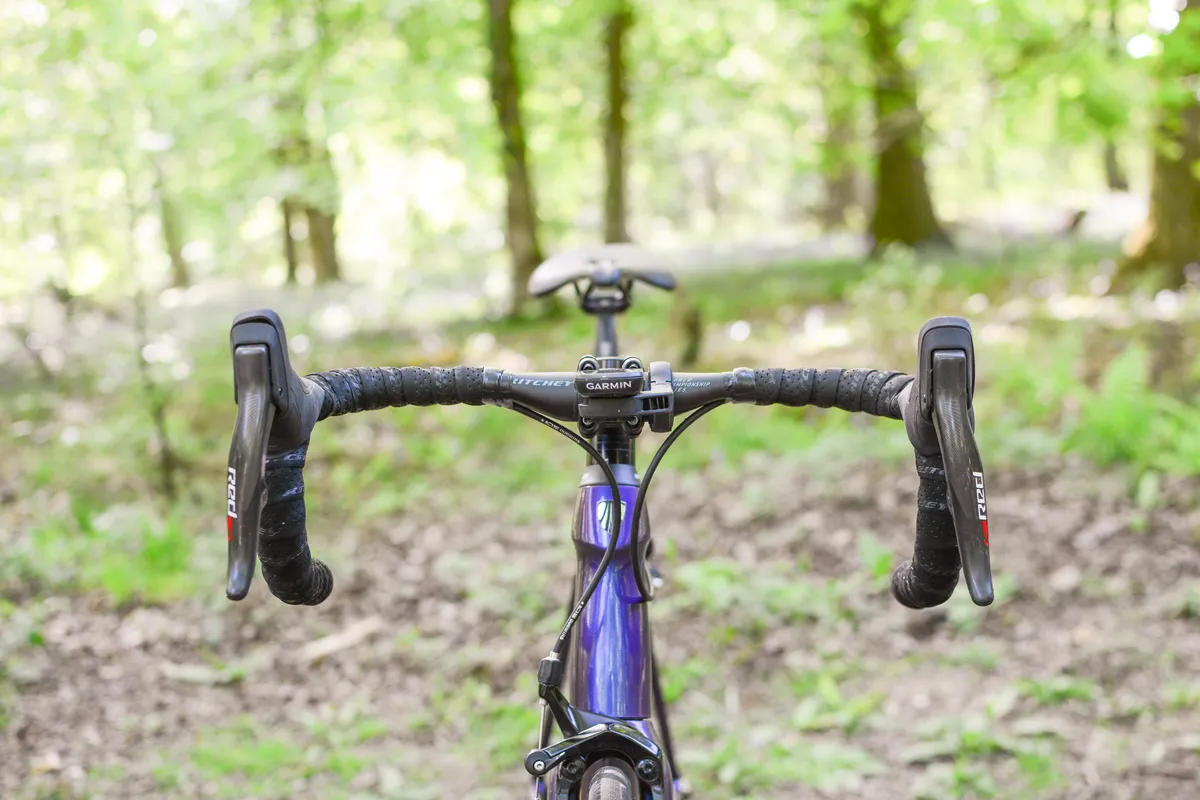
I’ve been boring people about how good aluminium bikes are for a while now, so it felt like it was time to put my (hypothetical) money where my mouth is.
I really liked the Emonda ALR when I reviewed the first generation model a couple of years ago so the news that there was an updated model designed for my beloved direct-mount brakes got me all in a lather.
I cleave naturally to spindly climber’s bikes rather than rolling billboard aero machines. I’m not built for speed on the flat and my weight means I get blown around on deep section rims anyway.
The fact that the Emonda is sold as a frameset (as well as complete bikes) and comes in a gorgeous purple-flip paint option was very much the cherry on top.
Trek Emonda ALR initial setup
Building a bike with eTap was a welcome novelty. With the derailleurs and shifters bolted on, it’s a process that’s more akin to pairing a Bluetooth speaker with your phone than conventional cable routing. Only the rear brake cable needed to be fed through the frame.

I did manage to break the tiny support shim that sits behind the front derailleur with what I thought was minimal force, but otherwise it was largely trouble free.
I cut the fork to allow for 30mm of headset spacers and with 20mm under the stem, I haven’t seen fit to move it up or down so far.
My intention was always to take advantage of the clearance the Emonda’s direct-mount brakes offer to fit decent sized tyres, and I’ve been running those lovely 28mm Veloflex Masters at around 60psi front / 70psi rear.
I actually set the bike up with latex tubes initially, but immediately destroyed one through incompetence and latex’s preternatural ability to get trapped by a tyre bead. That leaves me with a butyl tube at the back and latex one up front, a sort of rubbery mullet setup that probably won’t ever catch on.
Emonda ALR ride impressions so far
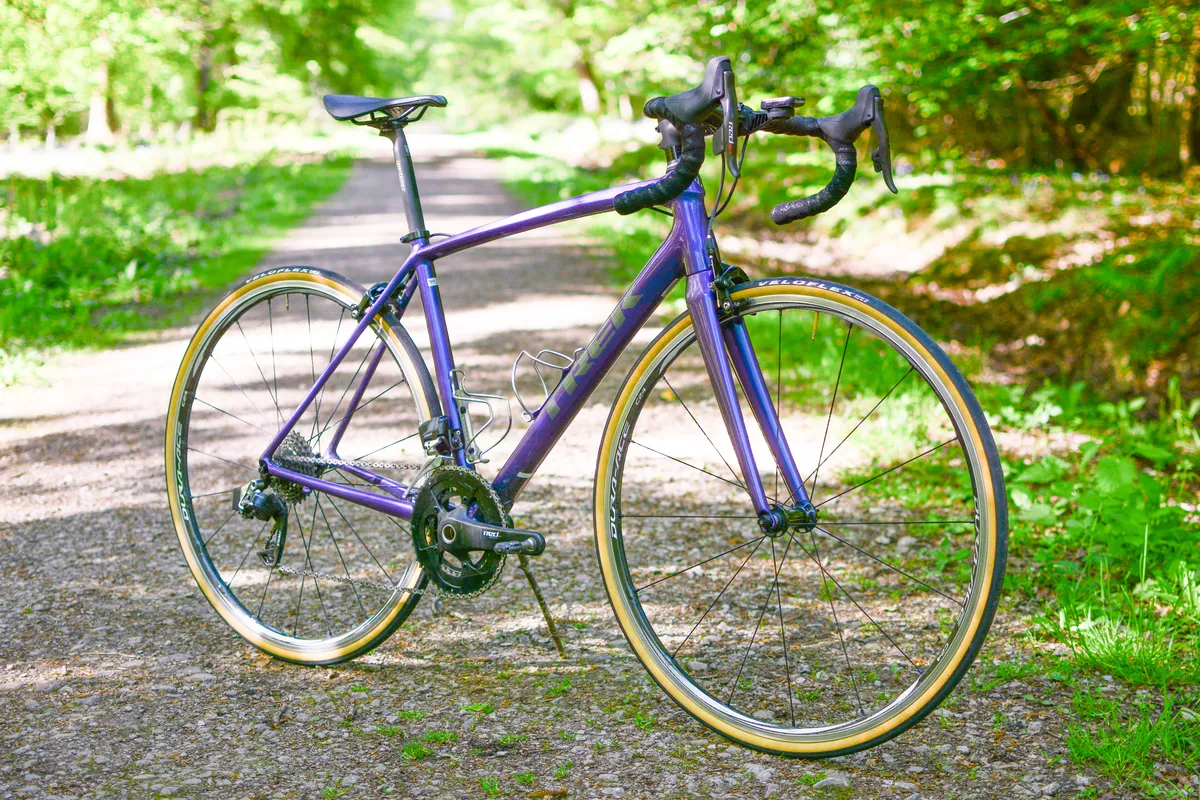
The new ALR is the same taut, lightweight machine I remember and with this dream spec, it’s properly lively. Climbing on a bike as light and stiff as this is a delight and my choice of gearing means I can winch up the nastiest of inclines.
I don’t know if it’s my memory playing tricks or the fact that I now live somewhere with pretty awful roads, but the ride quality isn’t exactly what I was expecting.
The Emonda ALR’s back end is delightfully smooth but the front is firmer than I recall, enough so that on fast descents with a bit of broken tarmac I’ve found myself holding back ever so slightly to maintain composure.
I’m honestly not sure why this is. Was my choice of super-stiff aero bars a mistake? Am I going soft? I need more time to work this out.
I also need to check my hanger alignment because my shifting seems to be very slightly out, but overall the eTap groupset has been a delight so far. The two-paddle shifting is very intuitive and I get on well with the shape of the hoods.
I’m genuinely disappointed with the brakes however. My experience with Shimano and Campagnolo direct-mount calipers has been nothing but positive, but the S-900s feel like a phoned-in afterthought.

Even leaving aside the generic looking finish, a squeeze of the lever produces visible caliper flex and they just don’t have the solidity and modulation of, say, Ultegra direct-mount brakes. I expected better, SRAM.
If it sounds like I'm feeling negative towards the Emonda, don't get me wrong. It's a delightful thing and I'm very much looking forward to putting more miles on it.
Trek Emonda ALR upgrades

While I’m very fond of the Dura-Ace clinchers, a wider, more modern set of wheels would be an obvious upgrade and could add a smidge more comfort. If I do upgrade, I’ll stick with something fairly low profile as I feel it suits the aesthetic of the bike.
The biggest surprise with my build has been those S-900 brakes. They’re remarkably bad and, in keeping with the parts bin theme, I’m very tempted to swap them for Shimanos, although I’m not certain if the lever pull would be optimal.
Should I mix groupsets? Should I seek out some ridiculous weight weenie specials instead? Let me know your thoughts in the comments.
